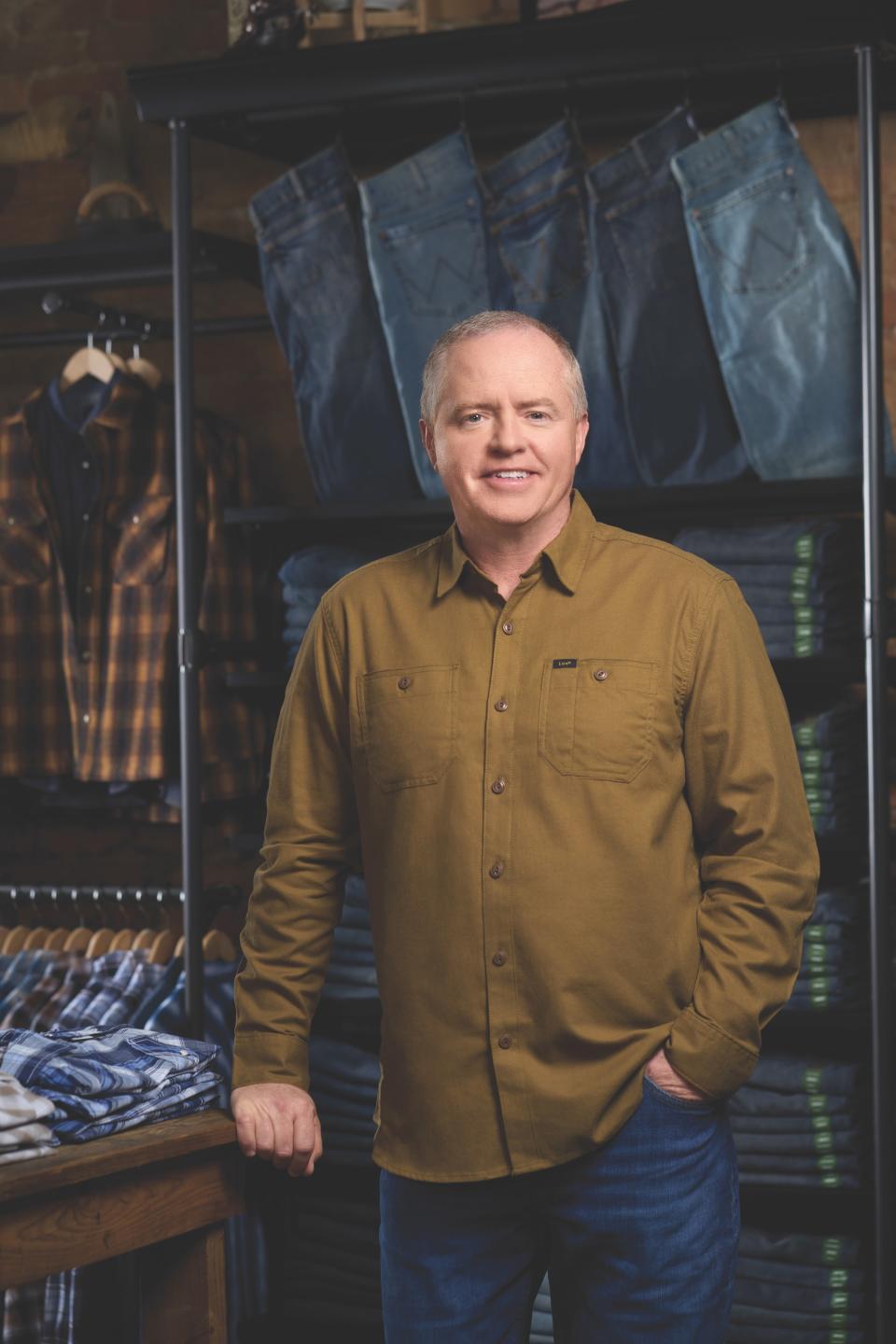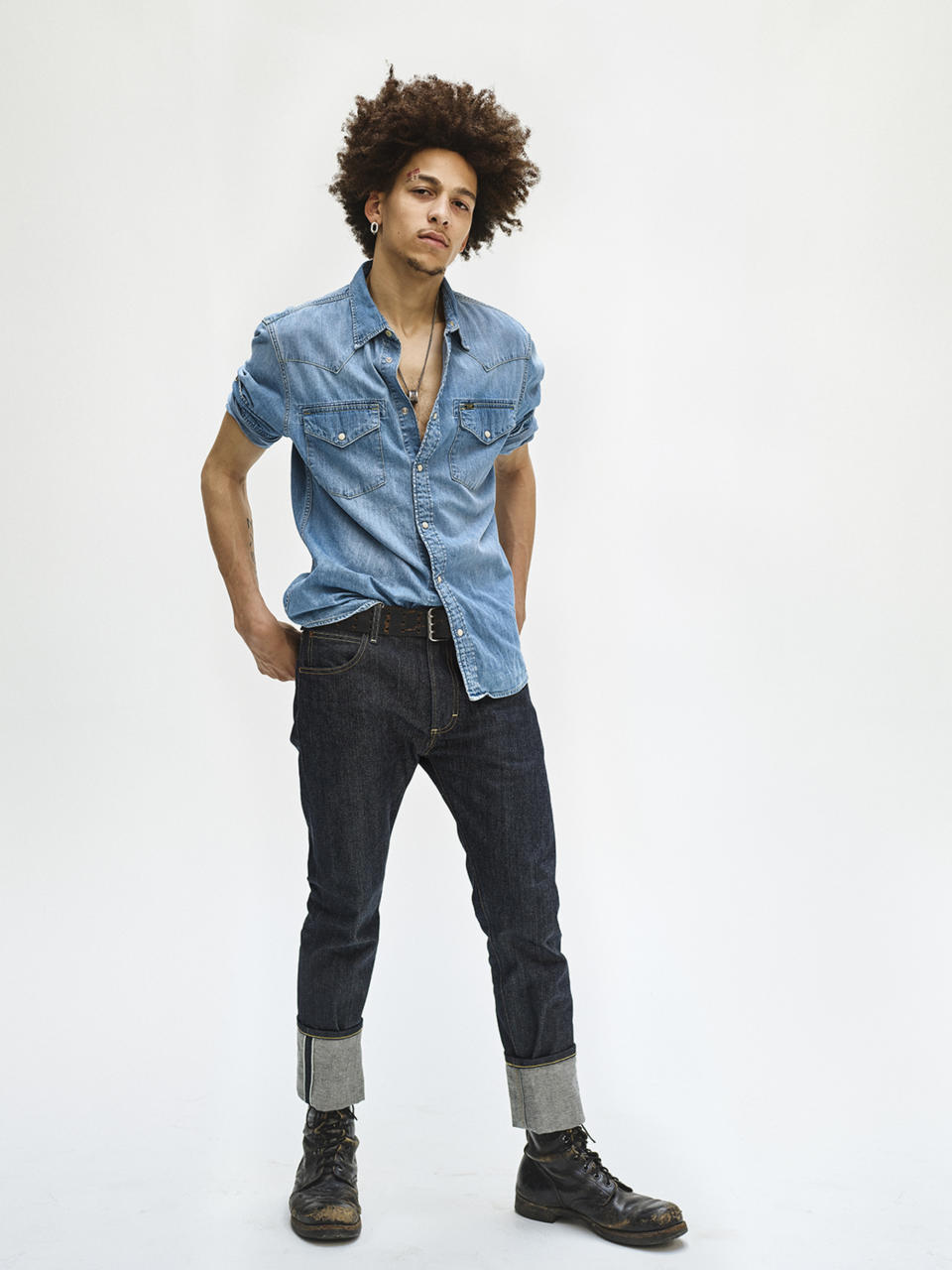How Lee and Wrangler Stepped Up


When Scott Baxter steps up to ring the opening bell at the New York Stock Exchange on Monday, he’ll be celebrating not just Kontoor Brands Inc.’s fifth anniversary, but also the resiliency that helped the onetime cast away stand on its own.
Kontoor was created when VF Corp. spun off the budget jeans giants Lee and Wrangler in 2019, and the growth path the company has charted since then has some lessons for the industry at large, especially during a time where Compagnie Financière Richemont is looking to off-load Yoox Net-a-porter, VF is looking to sell off more brands (sources said the effort includes Supreme) and companies are rejiggering for a new world.
More from WWD
VF Hired Goldman Sachs to Consider Selling Supreme, Sources Said
To Drive Growth in Brazil, Authentic Brands Group Names New Regional Head
For Baxter, who leads Kontoor as president, chief executive officer and chair, the spin-off from VF provided an opportunity for the business succeed on its own.
“We were not wanted,” said Baxter in an interview with WWD. “That produces a huge chip on your shoulder to say, ‘Oh, really?’ OK, well, we’ll show you. And that was certainly the case here.”

VF’s decision to jettison the jeans business was part of a company effort to focus on “retail-minded” and “activity-based lifestyle brands” like Vans and The North Face.
But the subtext was clear. While the powerhouse VF pushed on to new heights, the wholesale-heavy Lee and Wranger were being left behind. (Or at least VF shareholders, who received shares of Kontoor, had the option to leave them behind).
But, despite all of its advantages, VF stumbled hard with Vans, failed to keep up with consumers, loaded up on debt to buy Supreme and saw its market capitalization fall from more than $30 billion to $5 billion at the close on Wednesday.
Kontoor, meanwhile, has shown steady growth, with its market cap growing from about $2 billion to $3.8 billion over the past five years.
It was Baxter’s job to navigate Lee and Wrangler out into the public market and take the helm — and it wasn’t an easy assignment. But looking back, the CEO said the trials of the spin-off also helped solidify the Kontoor team and set the business up for success, even as it launched into the jaws of the pandemic.
“Our parent company wanted to get us out of there as fast as possible,” Baxter said. “We did it in 10 months, which is too fast. You have to make too many concessions. To hit the goal, to go ahead and spin, you had to just continually move the ball forward. It didn’t give you enough time for true analyzation in planning.
“That’s the key to a really successful spin-off from the very beginning — really analyze the business, really analyze the spin, and then really establish the processes that are going to go forward,” he said.
To move fast, Kontoor basically cloned VF, adopting the larger company’s structure and approach, from supply chain to hiring practices, Baxter said, giving the company an infrastructure designed for a business four times the size.
“You end up with maybe people in the wrong places, people with the wrong titles, people working on the wrong projects,” Baxter said.
Kontoor also spun out without the right IT system and relied on access to VF’s system while it installed its own enterprise resource planning system, which controls everything from the supply chain to how vendors get paid.
“Ours, it was stable, it was just old,” Baxter said. “We needed the new ERP system. So we did two things that are the hardest things to do in business: spin off and then put it in the ERP system.”
Meanwhile, Baxter was trying to create a new corporate culture and identity for the company.
“Most of your employees came from the old culture,” he said. “They were long tenured employees used to doing things a certain way. So you’ve got to start retraining and you’ve got to start reprogramming and rethinking about how you want your culture to look.”
That reset was important as the mission had changed and the jeans businesses no longer had to send the cash they generated to the larger company.
“We were a cash cow and we referred to that often as a cash cow for the rest of the company,” Baxter said. “Now we were finally able to use our own money for ourselves. The brands hadn’t been invested in really, we hadn’t been building new product, designing new product or going after other channels.

“We started investing behind the brands and to, I guess, the surprise of a lot of people, the brands started responding really well, and the consumer started responding really well, and we started hiring some good people and all of a sudden a little bit of success and a little bit more success. And here we are today doing fairly well.”
In a tough time for budget consumers wracked by inflation, Kontoor saw revenues dip 1 percent to $2.6 billion — slightly above the $2.5 billion in revenues seen in 2019. Net income last year totaled $231 million. And the journey continues with “Project Jeanius,” the company’s new effort to simplify and transform its processes further, creating $50 million and $100 million in gross profit improvement and cost savings.
Kontoor has gone beyond establishing itself and is reshaping for the future. Baxter said there’s no playbook on how to spin off a business — “you learn along the way” — but having done it once, he now sees more opportunities to set brands free from their portfolios.
“When I look at a big business, when I look at a house of brands, I sit and I think about, ‘Wow, that doesn’t fit. That might perform better if it was spun off or if it was somewhere else.’”
Once is enough for Baxter, but he did have a few tips for anyone looking to bring a brand out on its own.
“Establish a really good process, have open communication, and don’t allow the parent company to win every single battle,” he said. “We got hit pretty hard.”
The Bottom Line is a business analysis column written by Evan Clark, deputy managing editor, who has covered the fashion industry since 2000. It appears every other Thursday.
Best of WWD

